Electricity Sector Planning and Restructuring Assignment - UTS
VerifiedAdded on 2021/06/16
|6
|953
|41
Homework Assignment
AI Summary
This assignment solution addresses the restructuring of the Australian electricity industry. It begins with a snapshot of the industry's structure before and after restructuring, highlighting changes in generation sources, transmission, distribution, and retail. The solution then outlines the stated rationale for the restructuring, focusing on industry decision-making, social reliance, and market compatibility. A key part of the assignment involves analyzing market operator bids to construct a supply curve and calculate market prices, quantities produced, and revenues for different forecasted loads (400 MW, 600 MW, and 875 MW). The solution provides detailed calculations and analysis of the bidding chart data, demonstrating the application of spot pricing and energy pricing principles. References to relevant literature on electricity sector planning are also included.
1 out of 6
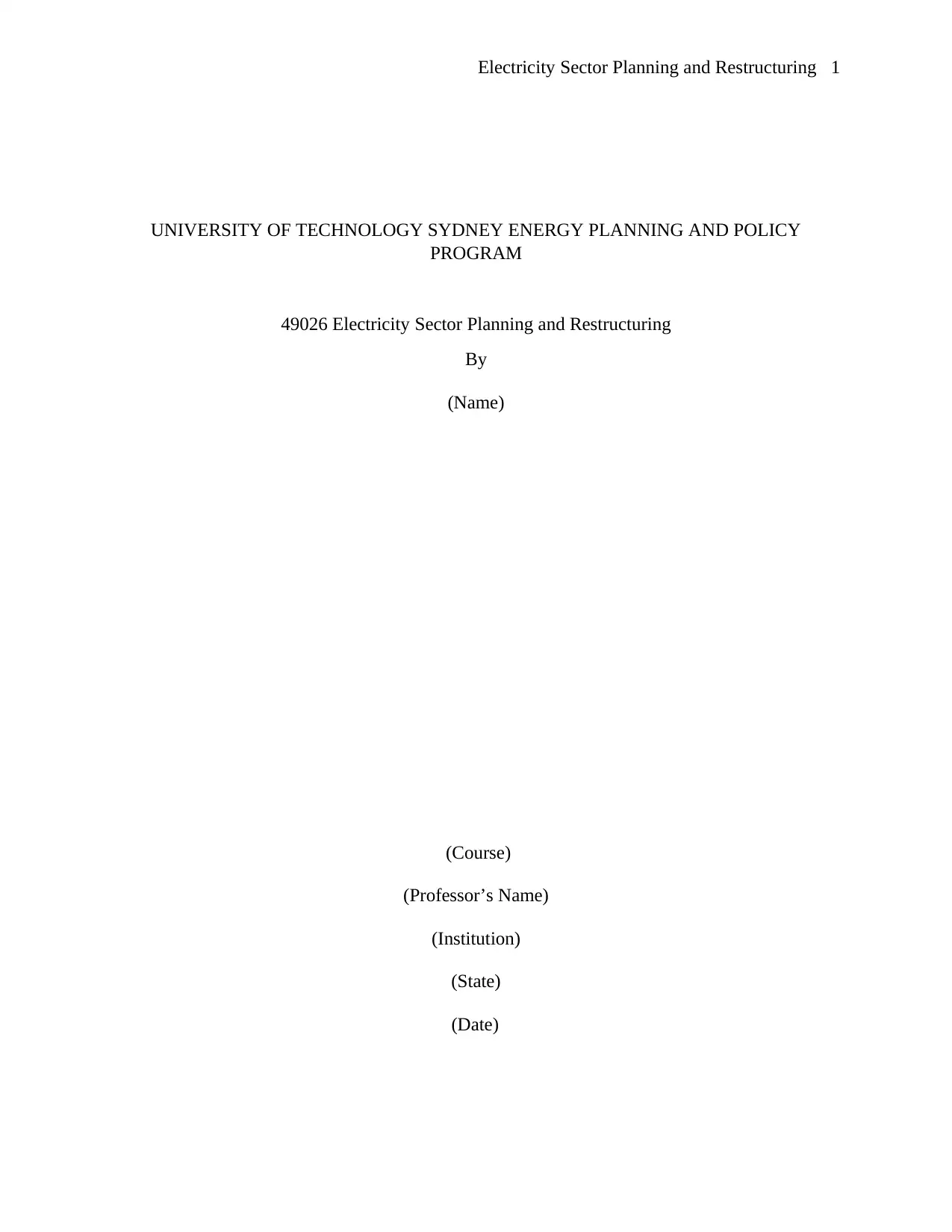
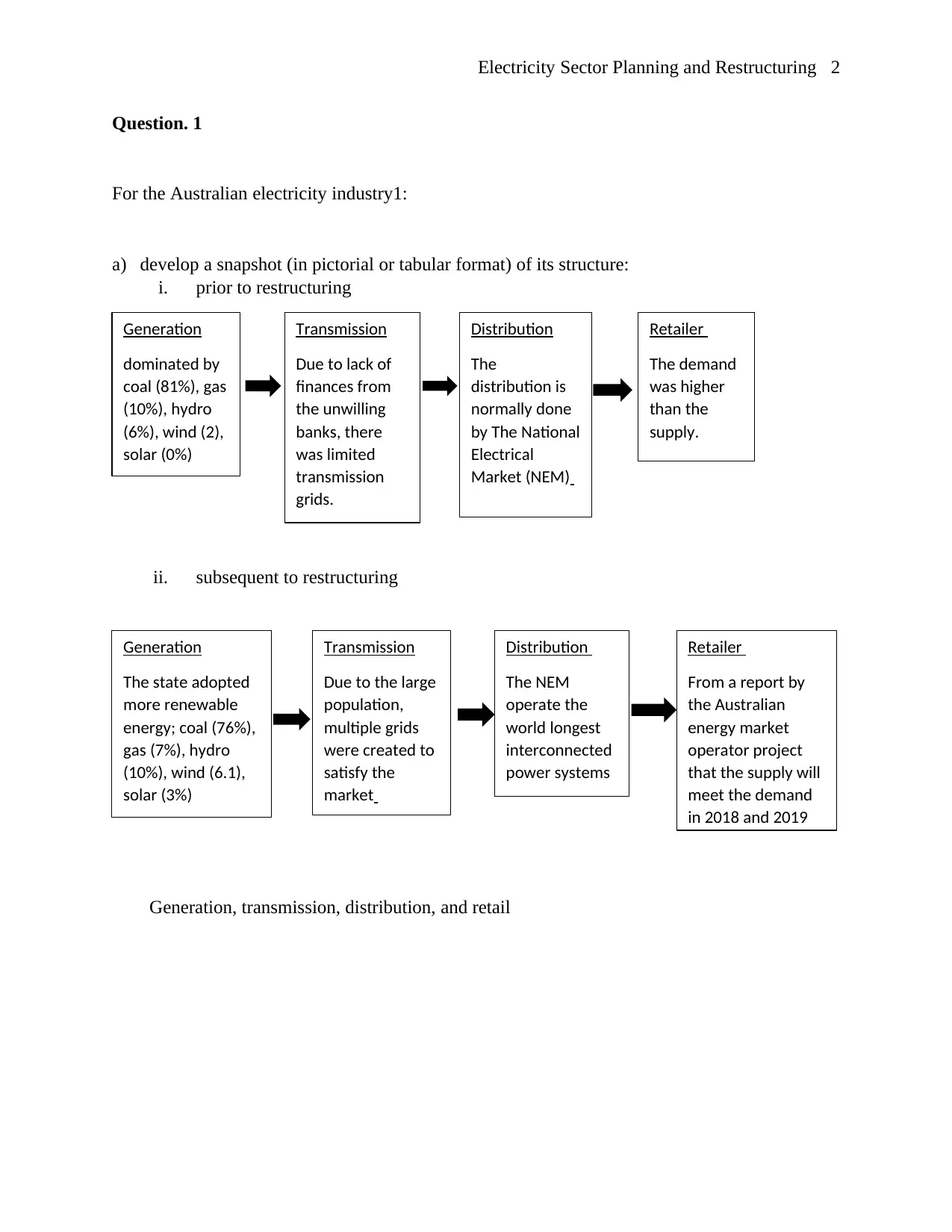


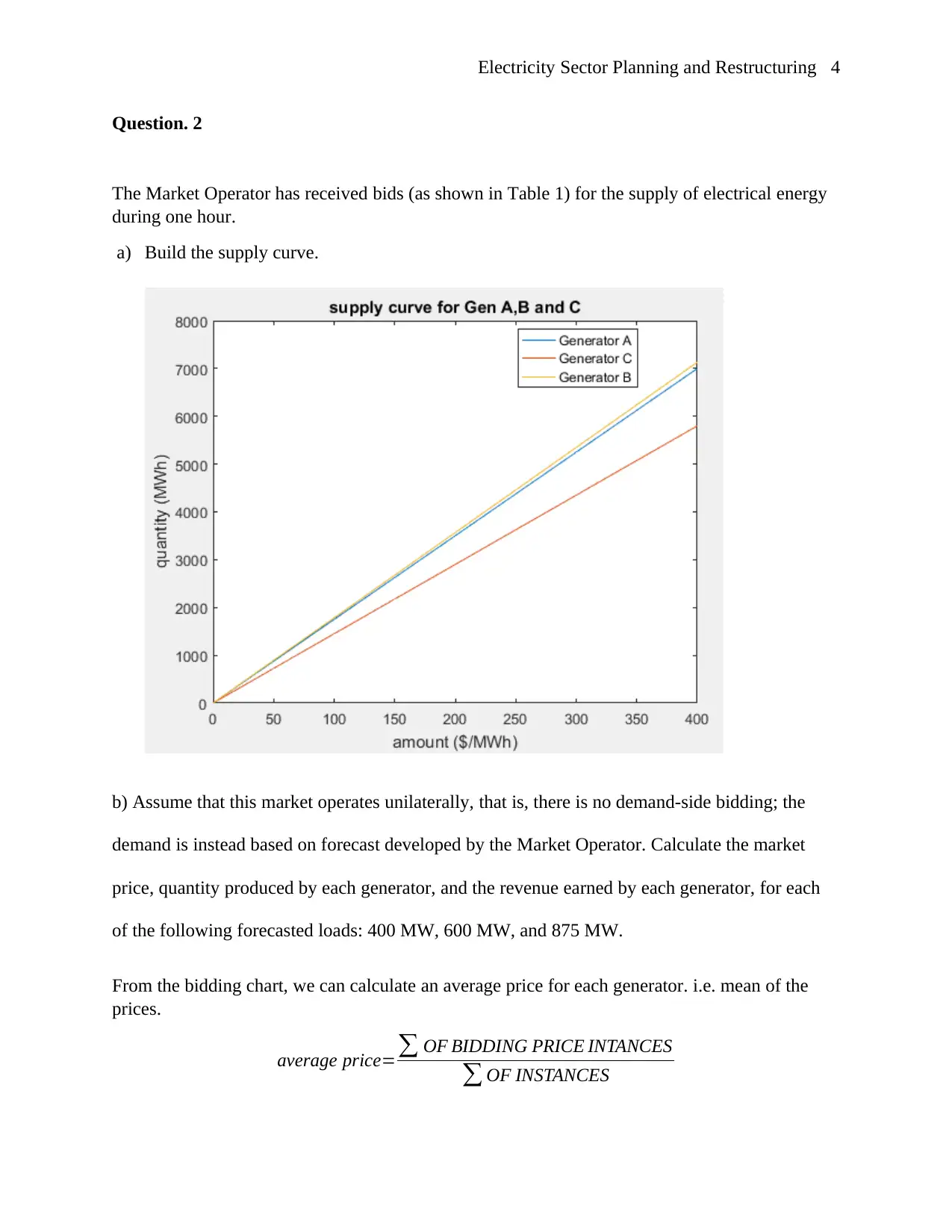
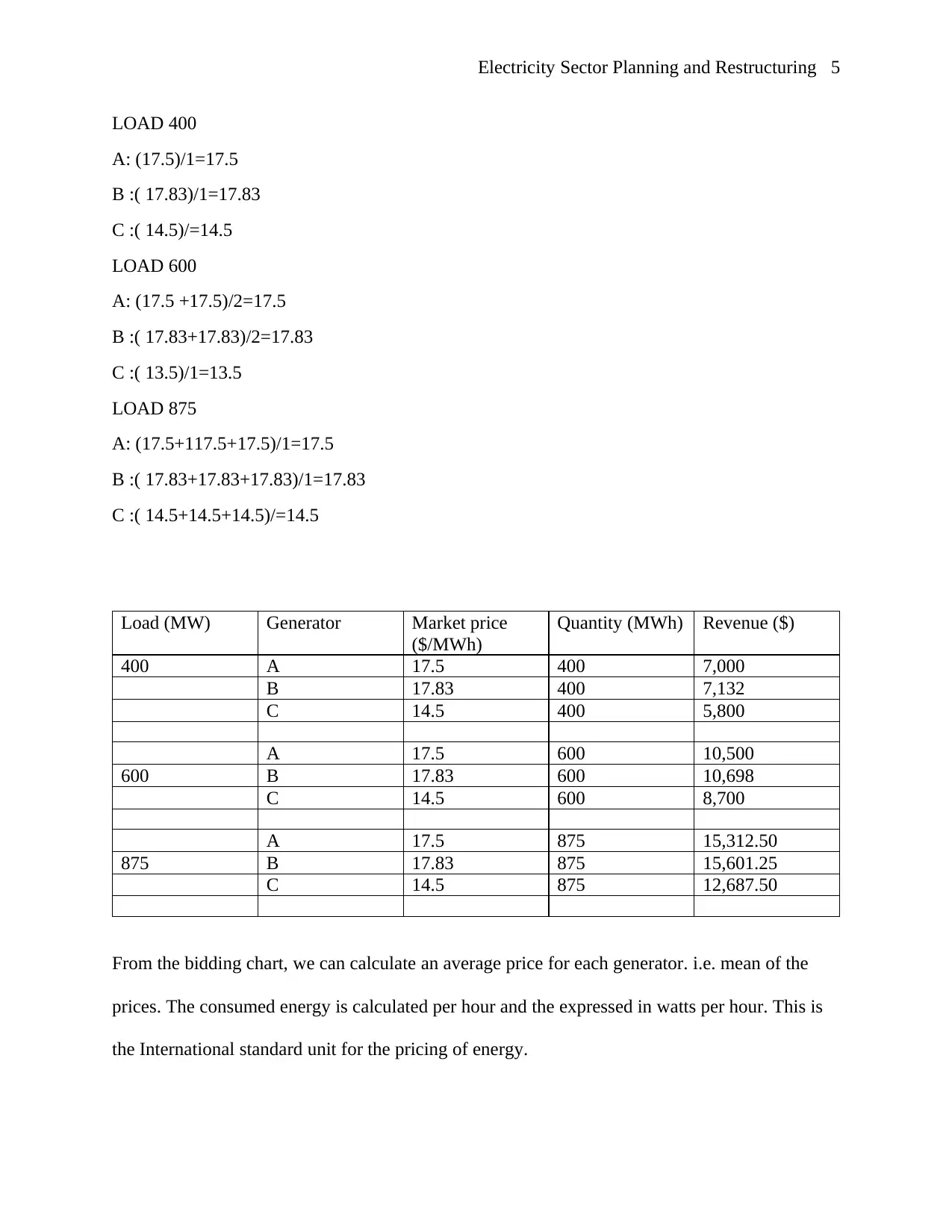
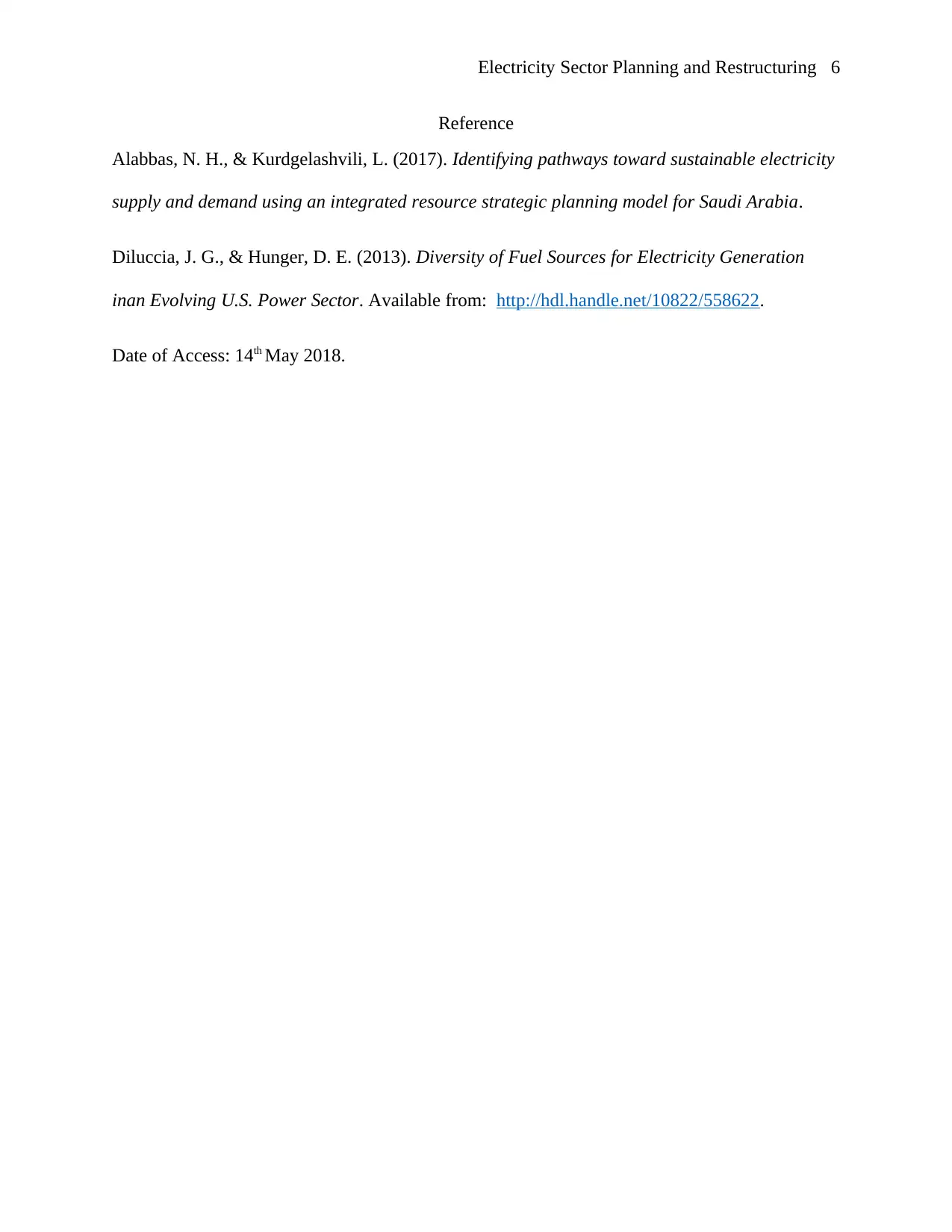






![[object Object]](/_next/static/media/star-bottom.7253800d.svg)